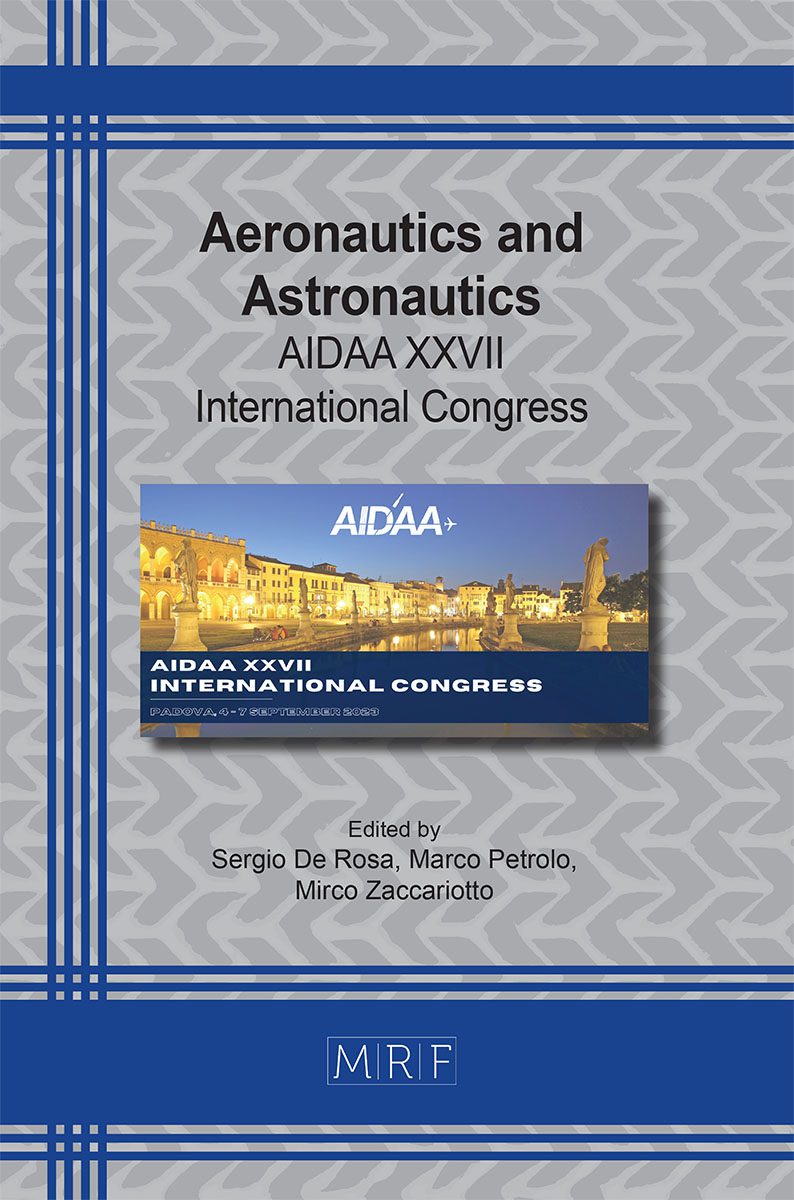Trajectory reconstruction by means of an event-camera-based visual odometry method and machine learned features
S. Chiodini, G. Trevisanuto, C. Bettanini, G. Colombatti, M. Pertile
download PDFAbstract. This paper presents a machine learned feature detector targeted to event-camera based visual odometry methods for unmanned aerial vehicles trajectory reconstruction. The proposed method uses machine-learned features to enhance the accuracy of the trajectory reconstruction. Traditional visual odometry methods suffer from poor performance in low light conditions and high-speed motion. The event-camera-based approach overcomes these limitations by detecting and processing only the changes in the visual scene. The machine-learned features are crafted to capture the unique characteristics of the event-camera data, enhancing the accuracy of the trajectory reconstruction. The inference pipeline is composed of a module repeated twice in sequence, formed by a Squeeze-and-Excite block and a ConvLSTM block with residual connection; it is followed by a final convolutional layer that provides the trajectories of the corners as a sequence of heatmaps. In the experimental part, a sequence of images was collected using an event-camera in outdoor environments for training and test.
Keywords
Visual Odometry, Computer Vision, Machine Learning
Published online 11/1/2023, 4 pages
Copyright © 2023 by the author(s)
Published under license by Materials Research Forum LLC., Millersville PA, USA
Citation: S. Chiodini, G. Trevisanuto, C. Bettanini, G. Colombatti, M. Pertile, Trajectory reconstruction by means of an event-camera-based visual odometry method and machine learned features, Materials Research Proceedings, Vol. 37, pp 705-708, 2023
DOI: https://doi.org/10.21741/9781644902813-150
The article was published as article 150 of the book Aeronautics and Astronautics
![]() Content from this work may be used under the terms of the Creative Commons Attribution 3.0 license. Any further distribution of this work must maintain attribution to the author(s) and the title of the work, journal citation and DOI.
Content from this work may be used under the terms of the Creative Commons Attribution 3.0 license. Any further distribution of this work must maintain attribution to the author(s) and the title of the work, journal citation and DOI.
References
[1] Lichtsteiner, P., Posch, C., & Delbruck, T. (2008). A 128$\times $128 120 dB 15$\mu $ s latency asynchronous temporal contrast vision sensor. IEEE journal of solid-state circuits, 43(2), 566-576. https://doi.org/10.1109/JSSC.2007.914337
[2] Mueggler, E., Rebecq, H., Gallego, G., Delbruck, T., & Scaramuzza, D. (2017). The event-camera dataset and simulator: Event-based data for pose estimation, visual odometry, and SLAM. The International Journal of Robotics Research, 36(2), 142-149. https://doi.org/10.1177/0278364917691115
[3] Sikorski, O., Izzo, D., & Meoni, G. (2021). Event-based spacecraft landing using time-to-contact. In Proceedings of the IEEE/CVF Conference on Computer Vision and Pattern Recognition (pp. 1941-1950). https://doi.org/10.1109/CVPRW53098.2021.00222
[4] Vasco, V., Glover, A., Bartolozzi, C.: Fast Event-Based Harris Corner Detection Exploiting the Advantages of Event-Driven Cameras. In: IEEE/RSJ International Conference on Intelligent Robots and Systems (IROS). pp. 4144–4149 (2016). https://doi.org/10.1109/IROS.2016.7759610
[5] Chiberre, P., Perot, E., Sironi, A., & Lepetit, V. (2022). Long-Lived Accurate Keypoint in Event Streams. arXiv preprint arXiv:2209.10385.












